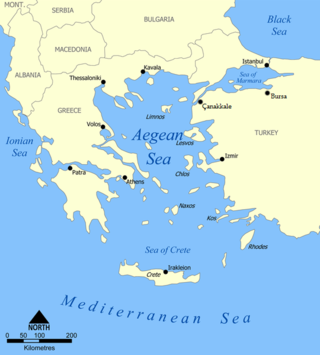
The Aegean Sea is an elongated embayment of the Mediterranean Sea between Europe and Asia. It is located between the Balkans and Anatolia, and covers an area of some 215,000 km2 (83,000 sq mi). In the north, the Aegean is connected to the Marmara Sea, which in turn connects to the Black Sea, by the straits of the Dardanelles and the Bosphorus, respectively. The Aegean Islands are located within the sea and some bound it on its southern periphery, including Crete and Rhodes. The sea reaches a maximum depth of 2,639 m (8,658 ft) to the west of Karpathos. The Thracian Sea and the Sea of Crete are main subdivisions of the Aegean Sea.
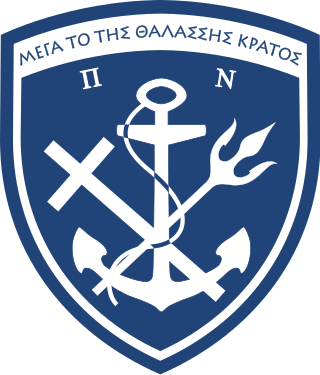
The Hellenic Navy is the naval force of Greece, part of the Hellenic Armed Forces. The modern Greek navy historically hails from the naval forces of various Aegean Islands, which fought in the Greek War of Independence. During the periods of monarchy it was known as the Royal Hellenic Navy.

Tenedos, or Bozcaada in Turkish, is an island of Turkey in the northeastern part of the Aegean Sea. Administratively, the island constitutes the Bozcaada district of Çanakkale Province. With an area of 39.9 km2 (15 sq mi) it is the third largest Turkish island after Imbros (Gökçeada) and Marmara. In 2018, the district had a population of 3023. The main industries are tourism, wine production and fishing. The island has been famous for its grapes, wines and red poppies for centuries. It is a former bishopric and presently a Latin Catholic titular see.
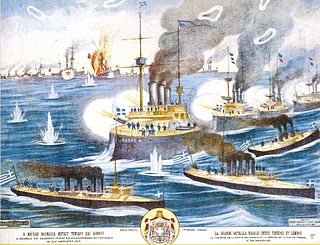
The Naval Battle of Lemnos, fought on 18 January [O.S. 5 January] 1913, was a naval battle during the First Balkan War, in which the Greeks defeated the second and last attempt of the Ottoman Empire to break the Greek naval blockade of the Dardanelles and reclaim supremacy over the Aegean Sea. This, the final naval battle of the First Balkan War, forced the Ottoman Navy to retreat to its base within the Dardanelles, from which it did not venture for the rest of the war, thus ensuring the dominion of the Aegean Sea and the Aegean islands by Greece.

The Aegean dispute is a set of interrelated controversies between Greece and Turkey over sovereignty and related rights in the region of the Aegean Sea. This set of conflicts has strongly affected Greek-Turkish relations since the 1970s, and has twice led to crises coming close to the outbreak of military hostilities, in 1987 and in early 1996. The issues in the Aegean fall into several categories:
The etesians, meltemia, or meltem (Turkish) are the strong, dry north winds of the Aegean Sea, which blow from about mid-May to mid-September. The Etesian winds are a dominant weather influence in the Aegean Basin.
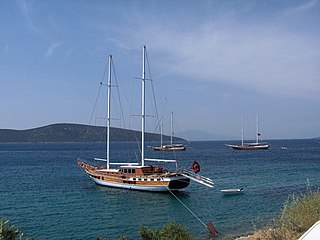
A gulet is a traditional design of a two-masted or three-masted wooden sailing vessel from the southwestern coast of Turkey, particularly built in the coastal towns of Bodrum and Marmaris; although similar vessels can be found all around the eastern Mediterranean. Today, this type of vessel, varying in size from 14 to 35 metres, is popular for tourist charters. For considerations of crew economy, diesel power is now almost universally used and many are not properly rigged for sailing.

Lambros Katsonis was a Greek privateer of the 18th century who would ultimately sail under the Russian flag with the rank of colonel. He became a knight of the Russian Empire and was awarded the Order of St. George.
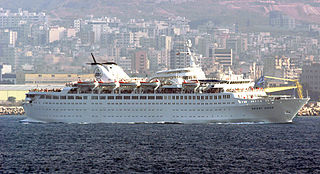
The MS Starward was a cruise ship built in 1968 at the AG Weser shipyard in Bremerhaven, West Germany. Originally commissioned for Norwegian Caribbean Line after the success of its first ship, Sunward, Starward was the first purpose-built ship for the newly-established cruise line. In 1995, Starward was sold to Festival Cruises, which they renamed the vessel Bolero. The vessel was shortly chartered to Spanish Cruise Line, however, it was sold to Abou Merhi Cruises after Festival Cruises was forced to declare bankruptcy in early 2004. In 2006, Louis Cruise Lines bought Orient Queen and kept the name intact. Orient Queen was briefly used the United States Government in 2006 to evacuate U.S. citizens out of Lebanon due to conflict between Lebanon and Israel. Louis Cruise Lines renamed the ship to Louis Aura in 2012. In 2017, Etstur, a Turkish travel agency, chartered the ship and renamed it to Aegean Queen. She was sold to for scrap the following year, and was broken up in Alang, India.

A caïque is a traditional fishing boat usually found among the waters of the Ionian or Aegean Sea, and also a light skiff used on the Bosporus. It is traditionally a small wooden trading vessel, brightly painted and rigged for sail. The caïque is also a typical case of positioning the widest beam far aft, with a long sharp bow.
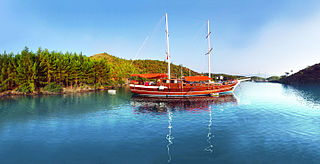
A Blue Cruise, also known as a Blue Voyage or Blue Tour, is a term used for recreational voyages along the Turkish Riviera, on Turkey's southwestern coast along the Aegean and Mediterranean seas. The cruise is typically a week-long trip aboard the local gulet schooners, to ancient cities, harbors, tombs, and beaches in the numerous small coves along the country's Turquoise Coast.

The Ottoman Navy, also known as the Ottoman Fleet, was the naval warfare arm of the Ottoman Empire. It was established after the Ottomans first reached the sea in 1323 by capturing Praenetos, the site of the first Ottoman naval shipyard and the nucleus of the future navy.

HMS Sickle was a third-batch S-class submarine built for the Royal Navy during World War II. Completed in 1942, she made her initial war patrol off the Norwegian coast. Sickle then sailed to Gibraltar, from where she conducted one patrol, then to Algiers, French North Africa. From 10 May to 10 October, the boat patrolled the Gulf of Genoa five times and sank a German submarine as well as three minesweepers and an escort ship. She then moved to Beirut, French Lebanon, and conducted two patrols in the Aegean Sea, sinking three caïques and a merchant ship, in addition to landing resistance operatives in Greece.
Imia is a pair of small uninhabited islets in the Aegean Sea, situated between the Greek island chain of the Dodecanese and the southwestern mainland coast of Turkey. They are known in Turkey as Kardak.

The lodos is the strong south-westerly wind which may predominate episodically in the Aegean Sea and Marmara Sea as well as the Mediterranean coast of Turkey all the year round; it frequently raises high seas and may give violent westerly squalls. The word lodos is Turkish, coming from Greek word "Notus", and originally means "southern wind".
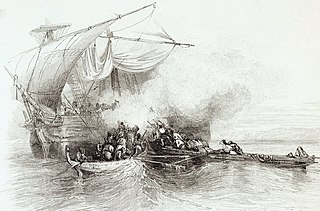
Aegean Sea anti-piracy operations began in 1825 when the United States government dispatched a squadron of ships to suppress Greek piracy in the Aegean Sea. The Greek civil wars of 1824–1825 and the decline of the Hellenic Navy made the Aegean quickly become a haven for pirates who sometimes doubled as privateers.

The Raid on Symi also known as Operation Tenement took place from 13 to 15 July 1944 as part of the Mediterranean Campaign in World War II. The action was a combined operation conducted by two Allied special forces, the British Special Boat Service and the Greek Sacred Band, who raided the German and Italian garrisons at the island of Symi in the Aegean Sea.
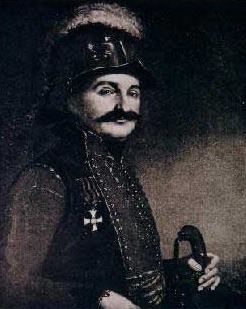
The Battle of Andros or Battle of Kafireas was fought on 17–18 May 1790, during the Russo-Turkish War of 1787–1792, between Cape Kafireas and the island of Andros, between the ships of Lambros Katsonis, a Greek privateer in Imperial Russian service, and an Algerian fleet of 30–32 vessels. The battle was a major victory for the Ottomans, as Katsonis lost five ships and his flotilla ceased to exist as an operational unit. On the other hand, the Ottomans suffered heavy casualties as well, and Katsonis was able to escape and reconstitute his forces, remaining active until the end of the war.
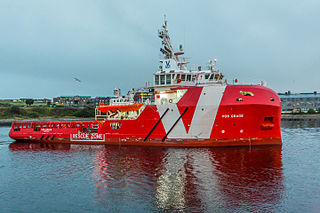
The MV VOS Grace is a platform supply vessel registered in the United Kingdom and operated by Vroon Offshore. Built in Fujian province, China the VOS Grace was chartered by the UK government to assist the Royal Fleet Auxiliary and Border Force in 2016 with operations rescuing migrants crossing the Aegean Sea during the European migrant crisis. The ship operated alongside RFA Mounts Bay of the Royal Fleet Auxiliary and the two Border Force cutters.

















